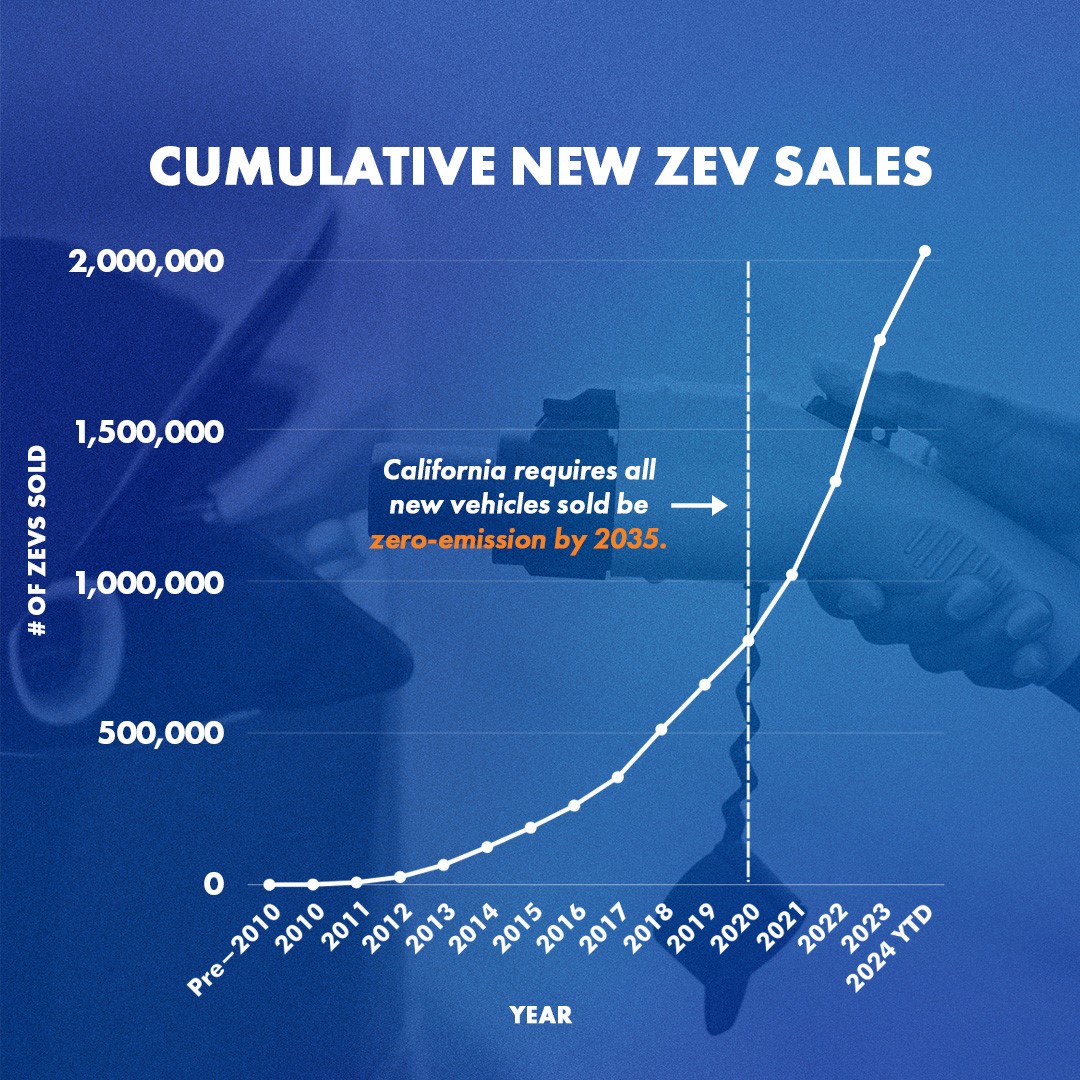“Clean cars are here to stay”: Biden-Harris Administration reaffirms California’s leadership in cutting pollution and cleaning the air
What you need to know: Today’s approval allows California to continue improving air quality and cutting pollution, as it has for decades — creating good jobs and growing the economy.
SACRAMENTO – The Biden-Harris Administration today announced that it is granting a Clean Air Act waiver allowing California to begin full implementation of its regulation requiring all new car sales be zero-emission by 2035.
The Advanced Clean Cars II (ACC II) regulation, adopted in 2022, begins with vehicle model year 2026 and will ensure California drivers can get the clean cars they want and save them money, while creating good paying jobs and improving public health.
“Clean cars are here to stay. The Biden-Harris Administration reaffirmed what we’ve known for decades – California can rise to the challenge of protecting our people by cleaning our air and cutting pollution.
With more makes and models available than ever before, millions of Californians have already made the switch to clean cars. Automakers and manufacturers have made it clear they intend to stick with California and consumers as we move toward clean cars that save people money.
Naysayers like President-elect Trump would prefer to side with the oil industry over consumers and American automakers, but California will continue fostering new innovations in the market.”
Governor Gavin Newsom

“California’s ongoing success in tackling pollution challenges and improving public health is possible thanks to landmark regulations that support technological innovation and move us toward a zero-emissions future for transportation,” said CARB Chair Liane Randolph. “Consumers and fleets are increasingly making the choice to drive clean vehicles, and today’s waiver approvals will further that progress.”
Fossil-fueled transportation is the largest source of air pollution in California, and this regulation will phase out sales of new fully gas-powered passenger vehicles by 2035.
The Advanced Clean Cars II regulation will:
- Save consumers money. Drivers stand to save over $7,500 when switching from gas-powered to zero emission vehicles due to lower maintenance and fuel costs – resulting in over $90 billion in net savings for Californians.
- Save lives and billions of dollars in public health costs. This policy will slash harmful pollutants by over 25%, save lives and save Californians $13 billion in health costs related to respiratory illnesses.
- Provide more protection for consumers. The regulation includes new requirements for clean vehicle and battery durability backed by stronger warranties. These not only ensure high quality vehicles from the factory but will also greatly improve the reliability of used vehicles.
- Increase consumer choice. The program requires automakers to deliver a steadily increasing number of clean vehicles to California. The rising number of clean vehicles is timed to ensure that clean options are available as the state reduces its dependence on fossil fuels. These vehicles are mostly powered by electricity or hydrogen. There are now several dozen distinct models available, from subcompacts to light-duty pickup trucks.
- Create American jobs and boost business. Automakers agree that the future of transportation is zero-emission, and American automakers and their suppliers benefit directly from this growing market.
The Biden-Harris Administration also approved a Clean Air Act waiver for the state’s heavy-duty omnibus regulation, which dramatically reduces harmful nitrogen oxide (NOx) emissions from heavy-duty trucks.
What’s next
ACC II continues the switch to a clean, light-duty vehicle fleet in California. Beginning with model year 2026, it requires that 35% of the new cars delivered for sale in California be zero-emission (plug-in hybrids, battery electric and hydrogen powered vehicles). Those deliveries must reach 100% by 2035.
Millions of Californians and other Americans have already made the switch to clean vehicles, and they are becoming more accessible each year. With more makes and models to choose from than ever before, more than two million zero-emission vehicles have been sold in California – and over a quarter of new car sales are now zero-emission.
The price barrier is falling, with models listed for less than $40,000 and several for less than $30,000. Batteries are the most expensive component in these cars and recent reports show battery prices falling so fast that many more models will be at price parity with fossil-fueled vehicles by 2026. In addition, California provides incentives to help lower-income drivers purchase these cars, and utilities often provide incentives, as well. Governor Newsom recently announced that California would step in to provide rebates if the incoming Trump Administration follows through on its threat to eliminate the federal tax credit.
California’s charging and fueling infrastructure is growing rapidly. There are now more than 150,000 publicly available charging stations in California and the California Energy Commission just announced a funding plan for 17,000 more. Combined with previous investment plans, utilities, and other programs, the state expects to reach 250,000 chargers in the next few years. In addition to the public network, the state estimates that more than 500,000 private home chargers are installed statewide.
Not a “ban” on gas-powered cars
ACC II is not a ban on gasoline vehicles. It regulates new cars only, not cars already on the road. Sales of new plug-in hybrids are also allowed. We expect to see internal combustion engine vehicles on California roads past 2050 and are ensuring a cleaner fuel supply with the Low Carbon Fuel Standard.
